Today, lets explore ‘How to Make Water disappear’.
Abstract
Amaze your kids, friends, and relatives through a magic of making water disappear.
Turn the water into solid and simply make it disappear.
The magic ingredient of our experiment is ‘sodium poly acrylate’. This t is a super absorbent polymer that absorbs water molecules many times their weight when added to water.
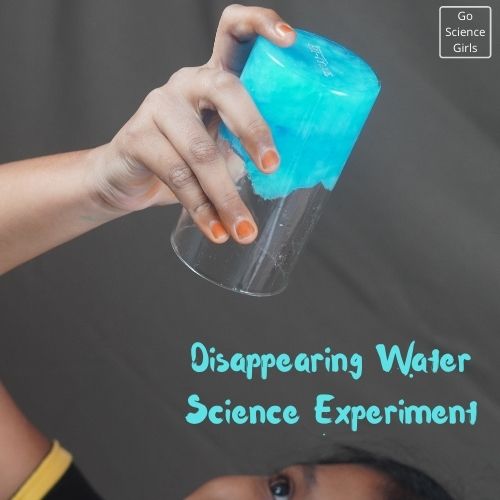
Science Principles explored in this activity: Chemistry, Applied Chemistry
This water science demonstration is one of the coolest science magic tricks you will ever see!
How to Make Water Disappear
Materials required to perform the Experiment
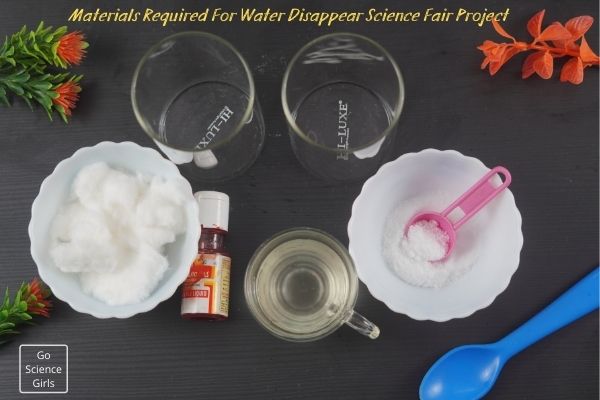
- 2-3 glass beakers or jars (You can use plastic cups as well. Plastic cups work best if you perform this experiment in the crowd as a trick of magic )
- Sodium Poly Acrylate (you can use pure chemical available pharmacies. We used stuff found in the inner layers of diapers as a replacement for pure chemical)
- Table salt
- Water
- Stirring rod (optional)
- Oil
Directions
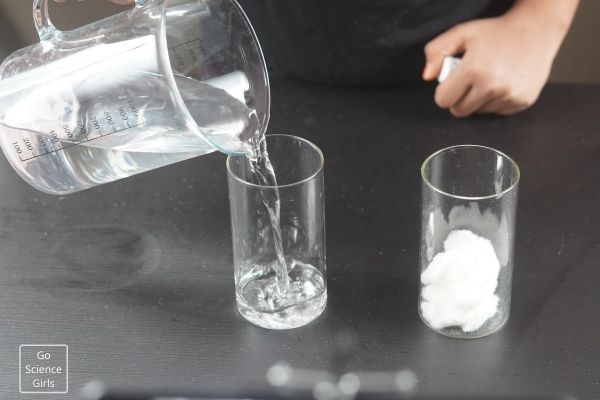
1) You need three plastic or glass beakers to perform the experiment.
Fill one glass beaker with some amount of water and the other with some amount of sodium poly acrylate.
This step must be done before you show the magic to your audience. Now take another beaker and pout the water mixed with oil.
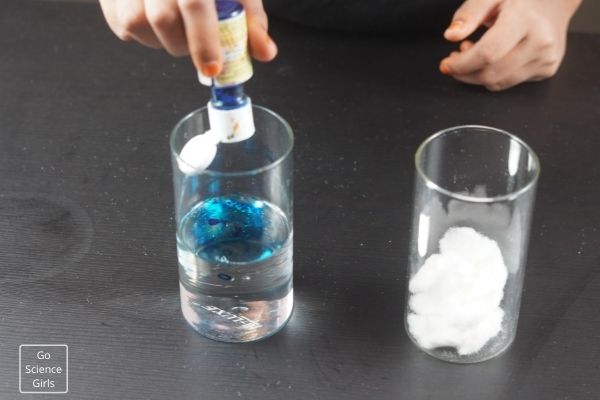
2) Then arrange all the three beakers in a line and transfer the water in the first beaker into the second one with sodium poly acrylate.
You can add more water until the absorption seems stop.
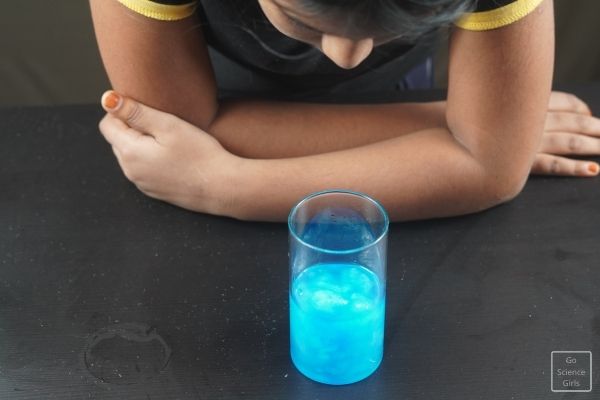
You can see an ice like mass structure referred as polymer. Also, you can feel the polymer by touching it. My kids enjoyed a lot with that.
3) Keep the beaker with water and oil mixture aside for some time.
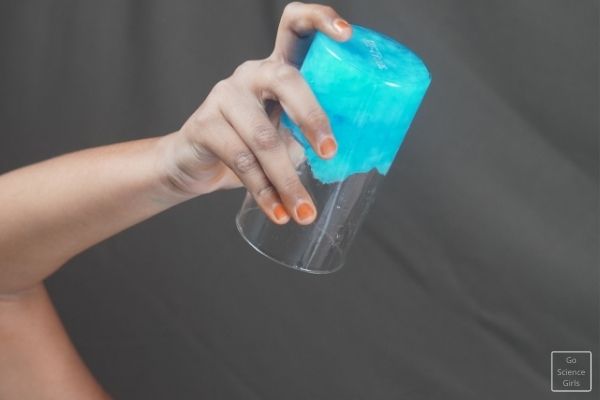
4) Now observe the water poured in the beaker with sodium poly acrylate.
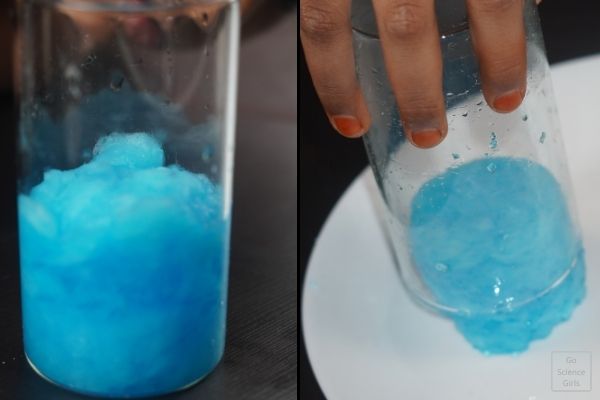
Did you see anything to pour out of the beaker? Obviously no! Right? Yes, the water you poured in the beaker with sodium poly acrylate gets disappear as soon as your transfer.
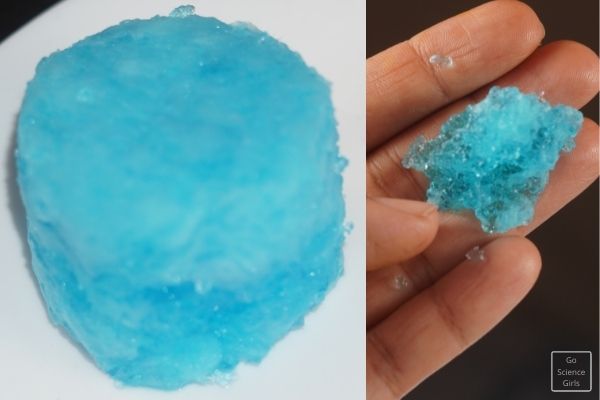
To extend the activity, we have tried it with different liquids.
We are going to test our secret ingredients (i.e. sodium poly acrylate) efficiency with other liquid (i.e. oil and water mixture).
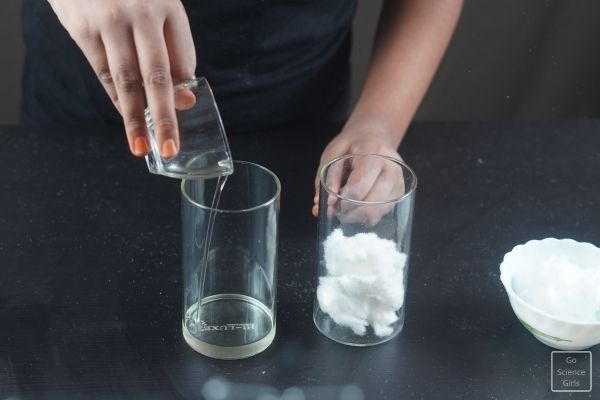
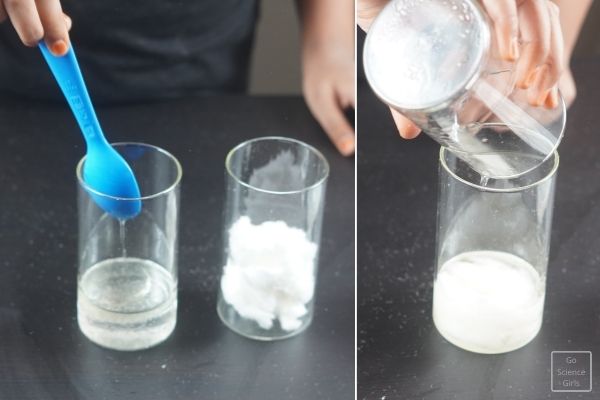
6) In the third beaker in which we took oil and water mixture, add some amount of sodium poly acrylate and observe the results.
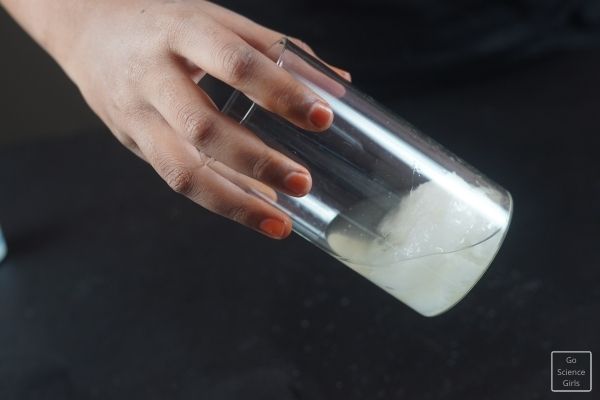
Within minutes the added sodium poly acrylate absorbs all the water leaving the oil in the beaker. Amazing right!?
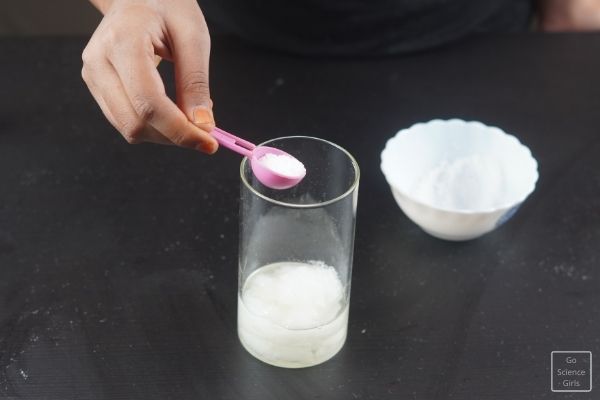
7) Now let us bring the table salt into picture. Add little amount of salt to the water and fill it in the glass beaker.
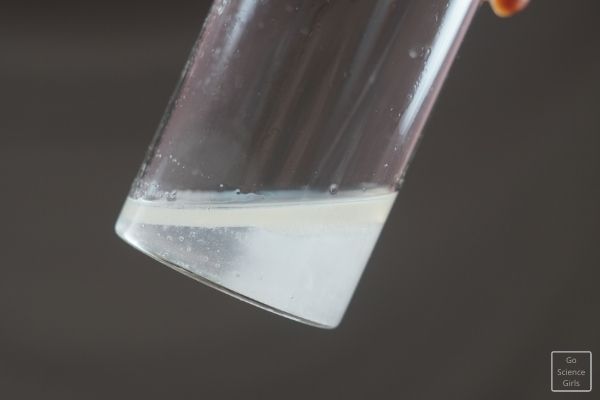
After adding salt water, the polymer again gets back to liquid state. This phenomenon completely depends on the amount of salt present or you take. Addition of salts deflates or collapses the swelling process.
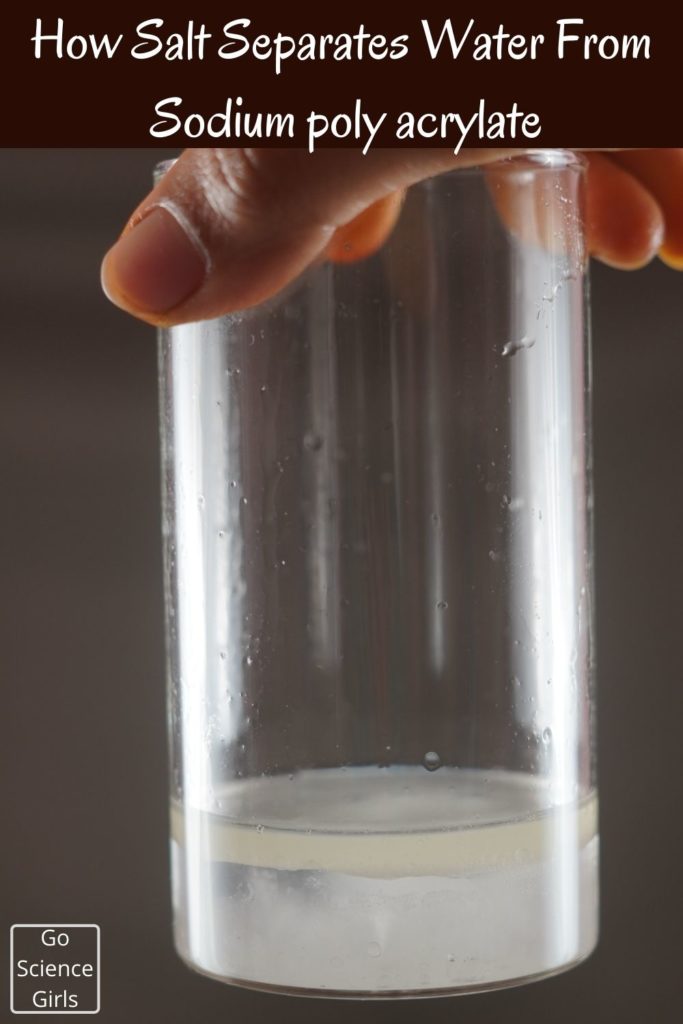
Science Behind Disappearing Water Experiment
The other referred names for sodium poly acrylate are ‘water lock’, ‘water gel’, ‘acrylic sodium salt’, and a ‘polymer of poly acrylic acid’.
It is widely used as a super absorbent polymer. About 50 years ago, it was first developed by the National Aeronautics and Space Administration (NASA) for the purpose of using diapers used by the astronauts while they were on long space trips.
As the names ‘water lock’ or ‘super-absorbent’ suggests, sodium poly acrylate absorbs water molecules several hundred times of its weight in water as well as in other liquid mixtures.
This is the most impressive property of sodium poly acrylate. In general, this chemical compound absorbs water molecules in large amounts up to 800 times its volume of distilled water.
In case of other liquids or liquid mixtures, the absorption capacity decreases and absorbs in lesser amounts.
Sodium poly acrylate attracts the water molecules by the process called osmosis through sodium ions available in sodium poly acrylate.
The same sodium ions are seen in our daily usage table salt. As water is highly attractive to sodium ions, when the water is added to sodium poly acrylate, it expands the crystals of each sodium poly acrylate powder particle and finally becomes a solid like gel.
What happens when salt water is added is added to the gel polymer?
When salt solution is added to the solid gel polymer, the high concentration of sodium ions present in table salt surrounds each and every particle of sodium poly acrylate.
This causes water to leave the bond with the sodium poly acrylate particles and further gets attached to the salt. Because of collapsed bonds.
The water solid again becomes a liquid solution. This process is also called osmosis again.
Coming to our water and oil mixture, the sodium ions of sodium poly acrylate attracts only water molecules but not the oil particles.
Hence the oil is left in the beaker whereas water turns in to a solid gel.
This is the reason sodium poly acrylate is widely used in industrial areas as a super absorbent to remove water molecules in fuels, diesels, oil, etc.
What is sodium poly acrylate?
Sodium poly acrylate also referred as acrylic sodium salt polymer, a superabsorbent polymer used extensively as a water absorbent in commercial applications.
A polymer is a long chain of like molecules or monomers. Sodium poly acrylate is a cross linked polymer that consists of sodium atoms.
It is a non-toxic, granny white, and odourless solid in the form of powder. Sodium poly acrylate is formed when a particular amount of acrylic acid is mixed with particular amount of sodium acrylate and polymerized.
The uses of sodium poly acrylate in our daily life are:
Agriculture: Allows potted plants and soil to retain water
Baby and Feminine products: Used in diapers and other feminine tampons and hygiene products as an absorbent.
Industrial: Used as a thickening agent
Medical: Used in surgical sponges to wipe away harmful spills
Cables: Protects electrical wires and cables from moisture
Fuel: Used to absorb water from gas containers like diesel and gasoline
Extension Ideas for the Experiment
Test liquids other than water are milk, vinegar, soda, coffee, tea, bleach, orange juice etc.
Observe which of these liquids turns gel faster. How long does it take to become gel in each one? Also, try with different types of water like tap water, distilled water, sparkle water, rain water etc.
Hope you all enjoyed this pretty cool water disappear science experiment. Try it with your kids and I am sure they will have lots of fun and a simple science at the same time.
Age: Middle School and above. Even the pre-schoolers enjoy this experiment watching the magic of disappearing water.
Safety: Though the chemical we are using is non-toxic, tale proper cautionary techniques. Handle sodium acrylate carefully as it can be extremely slippery when mixed with water and become an icy polymer.
FAQs
When you leave small amount of water in a cup for so long under sun, you may not see water after sometime.
Due to the heat, water gets evaporated and changes its liquid form into gas form.
This process is called water vaporization. We cannot witness the water vapor but can tell that process of water vaporization is done since there is less water or no water left in the cup.
The water in the oceans and some other water bodies gets evaporated due to long run exposure to sun.
During this process of evaporation, the water gets warmed and evaporated leaving the impurities behind.
This is the reason water that gets evaporated and is present in the atmosphere is much cleaner than the water on the Earth.
We often see that ice in the water gets melted because water temperature is higher than the ice temperature. Hence, heat energy is transferred from water to the ice.
Because of differences in temperatures, the heat energy transfer occurs.
The result will be the melted ice and at the same time, water temperature decreases and the ice temperature increases.
Generally, the water starts evaporation at 100 degree Celsius or 212 degree Fahrenheit.
You can bring water to this temperature either through boiling or through exposing to hot sun for longer time.
When you put water for boiling to achieve 100 degree Celsius, the water may not get boiled immediately when the flame is on.
It takes time because water’s polar nature requires specific amount of energy to bring it to boil.
